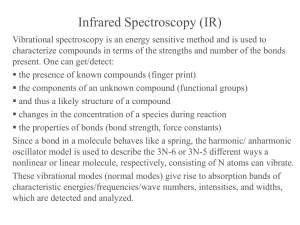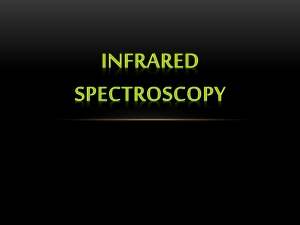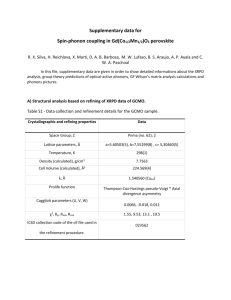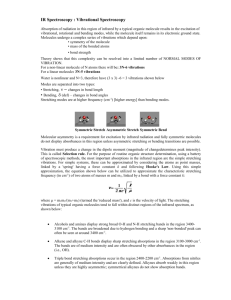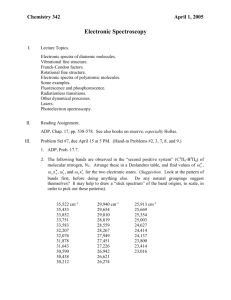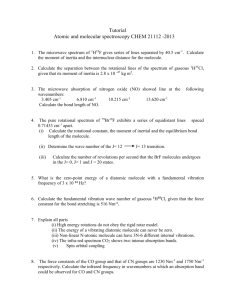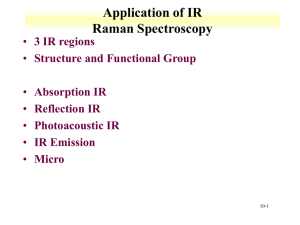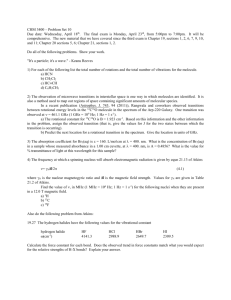Opgave 1
advertisement
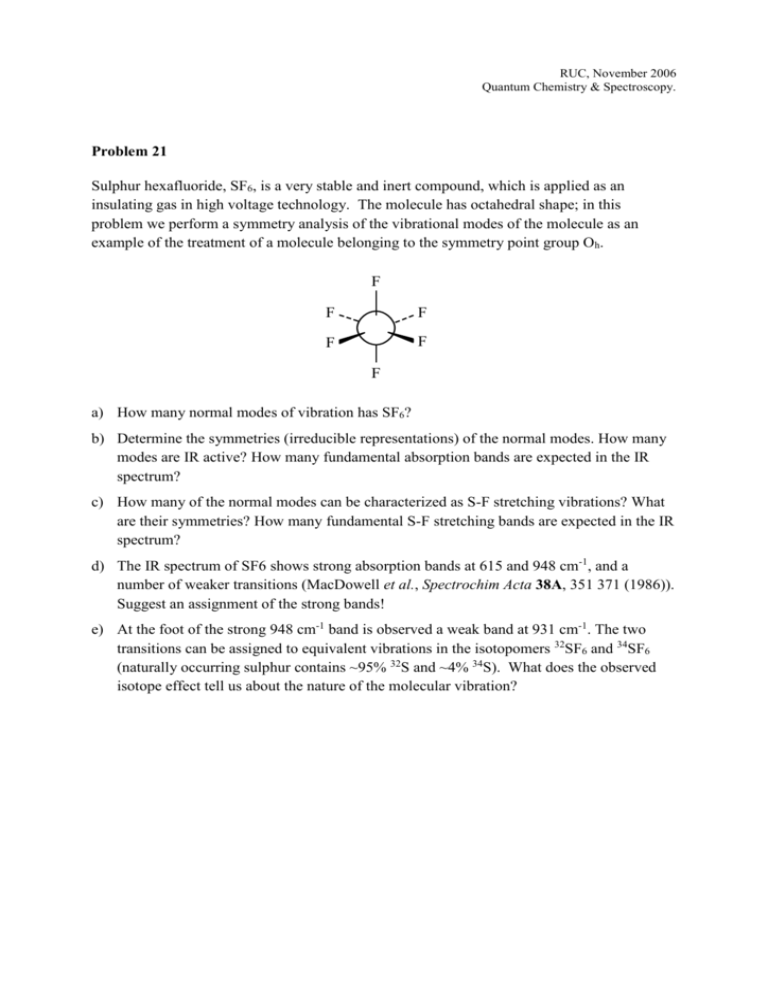
RUC, November 2006 Quantum Chemistry & Spectroscopy. Problem 21 Sulphur hexafluoride, SF6, is a very stable and inert compound, which is applied as an insulating gas in high voltage technology. The molecule has octahedral shape; in this problem we perform a symmetry analysis of the vibrational modes of the molecule as an example of the treatment of a molecule belonging to the symmetry point group Oh. F F F F F F a) How many normal modes of vibration has SF6? 1 2 b) Determine the symmetriesF (irreducible representations) of the normal modes. How many modes are IR active? How many fundamental absorption bands are expected in the IR F F F spectrum? c) How many of the Fnormal modes can be characterized F as S-F stretching F vibrations? What are their symmetries? How many fundamental S-F stretching bands are expected in the IR F spectrum? d) The IR spectrum of SF6 shows strong absorption bands at 615 and 948 cm-1, and a number of weaker transitions (MacDowell et al., Spectrochim Acta 38A, 351 371 (1986)). Suggest an assignment of the strong bands! e) At the foot of the strong 948 cm-1 band is observed a weak band at 931 cm-1. The two transitions can be assigned to equivalent vibrations in the isotopomers 32SF6 and 34SF6 (naturally occurring sulphur contains ~95% 32S and ~4% 34S). What does the observed isotope effect tell us about the nature of the molecular vibration?
